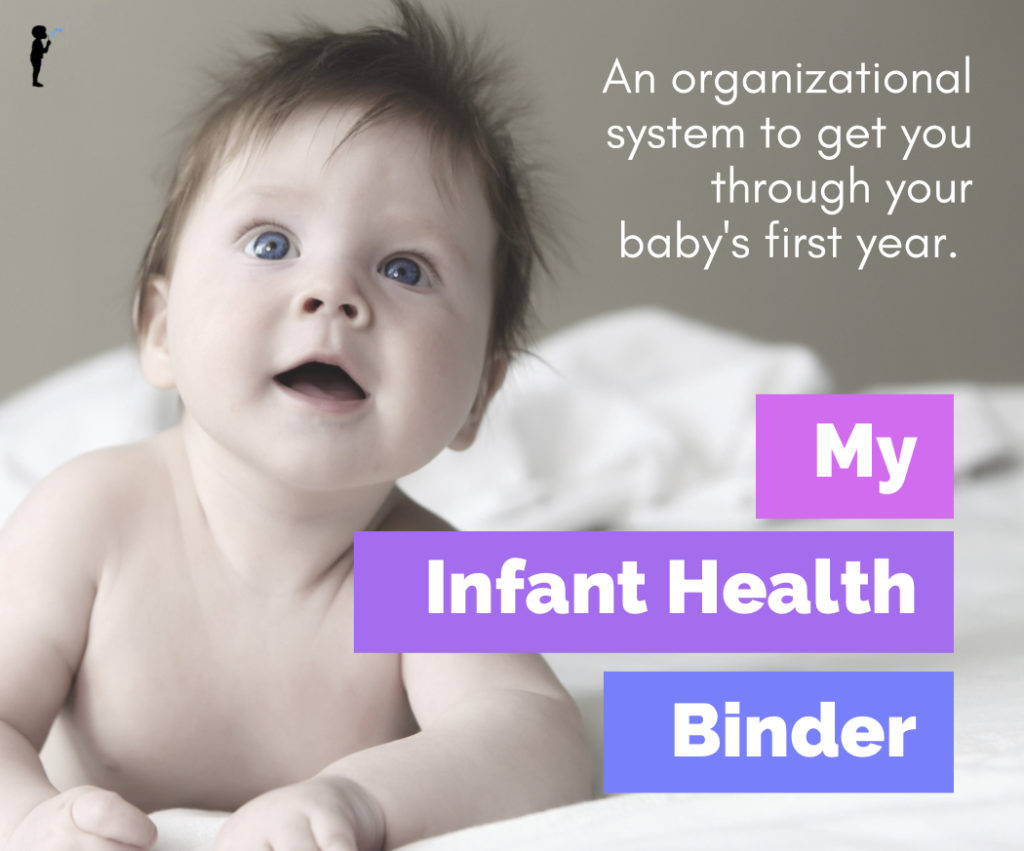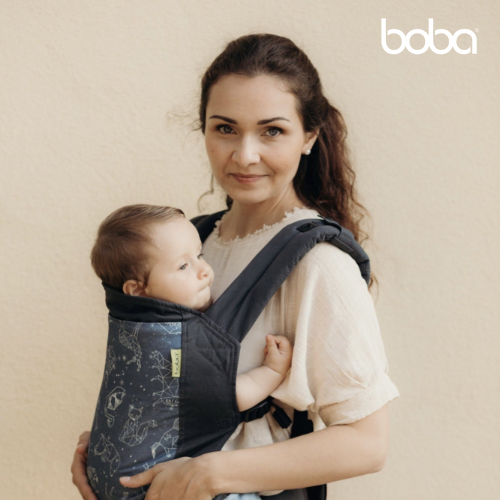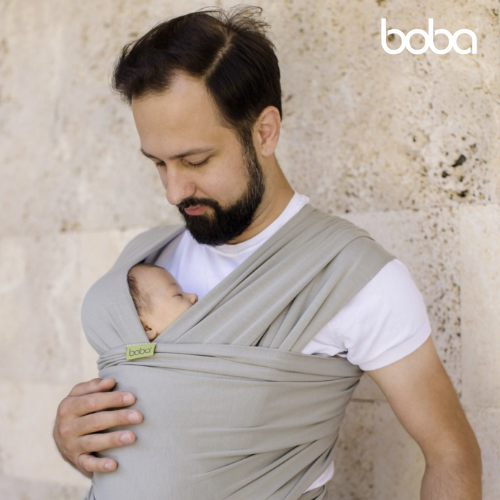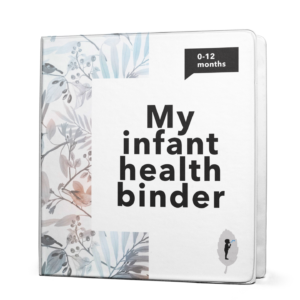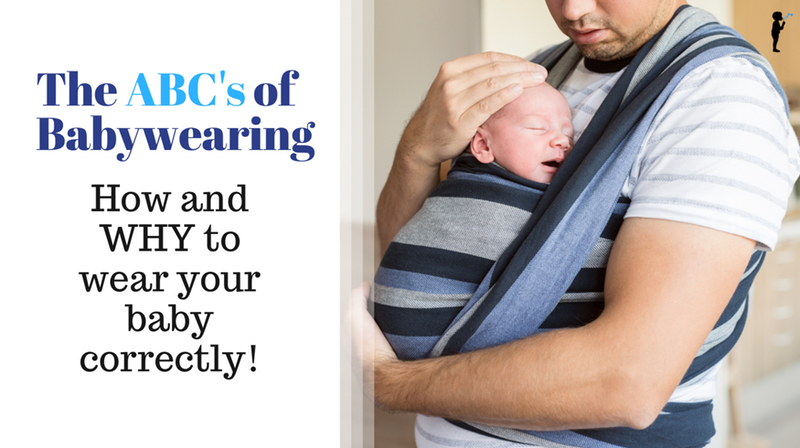
The “ABC’s” of Babywearing – How and WHY to wear your baby correctly!
Before becoming a mother, I thought people exaggerated just how much babies can cry. Ha! I know now that a minute of infant crying feels like an hour, especially when you’re a new parent.
When my son was an infant, babywearing was the only thing that would calm him during what felt like never-ending crying spells. Just as his Dad was getting home from a long day, he would often cry inconsolably unless we held and rocked him continuously. He was well-fed with a clean diaper and wasn’t in any pain, he just wanted desperately to be held and cuddled. It became a nightly ritual for his Dad to wrap him on his chest and gently dance around to music. Within seconds his crying stopped, and within minutes he was dozing peacefully. It was such a special time for them to bond and be close to each other, and it was nice to get a little break for myself.
What’s so great about babywearing?
Just like it sounds, babywearing entails carrying a baby or toddler around in a sling, wrap, or other carrier. Physiologically, babywearing provides an increase in the bonding hormone Oxytocin for both you and baby, which increases your love for one another. As you face each other, chest-to-chest, your heart rate drops and hers normalizes. Your blood pressure decreases, along with your stress hormone, and respiratory rate. The heat of your body keeps her warm, she is swayed from side-to-side, and it’s as if she’s floating on your chest. Babywearing is truly as close to the womb as it gets, and babies love anything that reminds them of their first home inside Mom. It’s the ideal setting to embrace the symbiotic relationship between baby and parent, where you can respond quickly to her every need, envelop her in loving touch, and easily breastfeed (or hand her off to Mom) when it’s time (1-3).
Babywearing has been a part of most cultures for many centuries. When I think of a woman in a hunting and gathering society, I imagine her with a baby in a sling on her back or side. Just like us, she wanted to be physically close to her baby to know he was safe and happy. And he wanted to be close to her, too. He needed to know milk was available, that she would be responsive to his every need, and he wanted to be snuggled in a way that was very familiar.
Like us, those women lived the reality that as much as we want to hold our babies all day, sometimes we just need to get other things done. Babywearing provides a wonderful, hands-free way to do other things while simultaneously holding, rocking, and snuggling your baby. These days, we see more and more parents and grandparents babywearing as they do their groceries or walk around the park. Strollers are great for some things, but babywearing frees up your hands to do laundry, work at your computer, and play with your other kids. You can breastfeed while doing it, which sure is convenient. And best of all, babywearing decreases fussing and crying. Who doesn’t love that?
Why Do Babies Cry?
Compared to other animals, human babies are born on the early side. Other mammals gestate until their neurological systems are fully developed, which is why some animals can walk and get their own food within hours of being born. If our brains fully developed in utero, our heads would get too large to pass through the birth canal. This means that human babies are born with immature brains and have to learn how to walk, talk, and feed themselves as their neurological systems develop. This makes babies SUPER reliant on their parents for, well, everything. Human babies evolved to communicate when they need something in a way that their parents couldn’t ignore: a piercing scream and gasp for air, combined with an unpleasant facial expression. As a baby’s only way of communicating, crying acts as a protective mechanism to get her what she needs, ideally as quickly as possible (4-5).
Sometimes crying is an indication that a baby needs to be fed, changed, or has some sort of discomfort, but it’s often a request to be held and snuggled. Babies like to be held A LOT – and who can blame them? Adults love being snuggled, too! At some point you may notice your baby has different sounding cries for different things, which allows you to figure out what she needs more easily. Read about 7 Types of Baby Cries here.
Why Western Babies Cry More
All babies cry, and sometimes they cry a whole lot. You may have heard that African babies don’t cry, which isn’t exactly true, but when they do, it’s for a fraction of the time and intensity of Western babies. In many non-Western cultures, Colic isn’t even a medical diagnosis because babies cry so little. In these same cultures, they don’t have peak crying times, toddlers don’t have the “terrible twos,” and the concept of a “difficult” child doesn’t exist because children aren’t typically difficult. Sounds like some weird utopia, right (4-5)?
In North America and Europe, we’re told it’s normal for a baby to cry for more than 2 hours per day during the first few weeks of life, followed by a decrease in crying, then an increase again at 6-8 weeks. We’re also told it’s normal for babies to cry a lot in the late afternoon and evening. Your parents and grandparents were probably encouraged to let their babies cry themselves to sleep in an effort to teach them to “self-soothe” and develop independence. They may still think this is the best approach and may encourage you to use it. In addition to a more hands-off approach, the 1950s and 1960s also brought about a push for more bottle feeding, leaving babies to sleep alone, and creating strict sleep and feeding schedules. The goal was to get babies to conform to our busy, modern lifestyle while instilling self-reliance, something our society highly values. However, these practices are counter to our evolution as a synergistic pair, where we follow our baby’s natural rhythm and respond to his needs as they arise (4-6).
As we know, babies and toddlers are not at all independent. They rely on us for basic survival and nurturing for several years. As a result of the practices described above, we now see less holding and touching of babies, lower breastfeeding rates, and less co-sleeping, all of which are less than ideal for healthy attachment and happy kids. Since Western babies aren’t getting their basic needs met as well, they have to ask for more help in the only way they know how – through crying (4-5,7).
Ignoring a crying baby goes against our deepest instincts as parents. A recent study showed that new and experienced mothers all over the world respond to their crying babies in exactly the same way – by promptly picking them up, holding, and talking to them. What this tells us is that we are universally hard-wired to respond quickly to our babies, and to hold and reassure them, not to ignore their cries (8).
Excessive crying puts immense stress on the delicate and immature neurological system of an infant. What we know from recent studies is that early stress on the developing brain can be detrimental to attachment and bonding, which can cause emotional, cognitive, memory, social, and behavioral problems down the line. Babywearing is an opportunity to decrease crying and improve attachment, which benefits both parents and babies (4-5, 7, 9-10).
What traditional cultures can teach us: Babywearing rocks!
In many cultures, and for most of human history, babies spend the majority of their time being carried in a sling attached to a parent, sibling, or community member. Babies are integrated into traditional cultures from the earliest point and raised with the help of the larger community. Parents from those societies can’t fathom putting their children down for even a brief time, much less sleeping away from them or bottle feeding them. When a mother in a hunting and gathering society goes out to gather food, her baby goes with her. A baby on a hip can continuously breastfeed without having to cry out for food. Instead of diapers, the sling is padded with straw and switched out as needed, so baby never even has to be taken out the sling to be changed (that is obviously not the case for us). A baby who is getting her need for closeness met doesn’t have to cry out to be picked up and held. These babies get everything they need in the babywearing setting, which makes for less crying and overall happier babies (4-5).
In the industrialized world, most of us have to work outside of the home and can’t take our babies with us. But even a few hours of babywearing per day can make a big difference in crying and healthy attachment. One study showed that young infants who were carried just 3 hours per day cried and fussed 43% less overall, and 51% less during the evening hours. The babies were found to be generally happier during the hours they were awake, and they didn’t experience a peak in crying at 6 weeks. What an incredible parenting tool! Less crying in your baby means you’ll be happier, too. And we know that happy parents make for happy babies, so everyone wins (4-5, 11).
Alright, I’m sold. Where can I learn more about babywearing?
Most baby carriers have instructional videos online, or you may want to ask a seasoned babywearer to help you learn how to use it. Babywearing International has chapters all over the US that can help you figure out which carrier is best for your family. Your local chapter may have a lending library where you can check out carriers for a small fee. You can usually try them on at the meetings and it’s a great opportunity to meet other families and babywearers. The Babywearer is an online forum dedicated to answering all your babywearing questions and there are several books about babywearing and attachment parenting you can check out.
So what are these ABC’s of Babywearing? And why are they important?
It is incredibly important to select the right baby carrier and to make sure your baby is positioned appropriately. Incorrect baby carrying can lead to hip dysplasia (read more about that here). Even worse, selecting the wrong carrier or not paying attention to the the ABC’s can lead to death by suffocation. (See this article about the now-recalled Infanto Baby Sling or SlingRider.)
A = Airway
Make sure your baby’s airway is open by keeping the chin off the chest and allowing fresh air to circulate around the face. Her head should be visible at all times and close enough to kiss. Snoring is not cute! Snoring is a sign that your baby’s airway is not fully open. Adjust your baby so you hear minimal snores and noises. Newborn babies can have their head flop over very easily and compress their airways – check frequently to make sure your baby is breathing and has a nice pink color.
B = Body positioning
If she’s too young to hold up her own head, make sure it’s supported and her body is not slumped. In young babies, legs should be in an M shape with the knees higher than the bum, and in older babies, the thighs should be supported by the carrier. (See more in our article Baby wearing safely (and why I don’t like the Baby Bjorn)
C = Comfort
Make sure you and baby are comfortable and that you feel confident once the carrier is on. It may take you a few tries to get it right. You will probably get hot from all that snuggling, so you may want to take your shirt off before putting on the carrier (assuming you’re in a private place). Babies love skin-to-skin contact and when you need to breastfeed, it will make things easier.
For more information check out Baby Wearing International and their post on baby wearing safety. (It has lots of great pictures showing examples of how to baby wear safely!)
What to do if your baby is still crying. (When to See A Doctor and When to Ask for Help.)
Babies only cry when they have a reason to, so if your baby is crying inconsolably and you’ve tried everything under the sun to comfort her, it’s worth a visit to the doctor to make sure there’s nothing physically wrong.
Excessive crying can be very stressful for parents. If you feel like you might do something to harm yourself or your baby, it’s okay to put the baby down and walk away. Please, please walk away if you need to! Call a friend to come over and relieve you or hand the baby over to your partner, and consider having a visit with your doctor to assess for postpartum depression and anxiety.
References:
- Vittner D, McGrath J, Robinson J, et al. Increase in Oxytocin From Skin-to-Skin Contact Enhances Development of Parent-Infant Relationship. Res Nurs. 2018 Jan;20(1):54-62.
- Jones H, Santamaria N. Physiological benefits to parents from undertaking skin-to-skin contact with their neonate, in a neonatal intensive special care unit. Scan J Caring Sci. 2017 Nov 13.
- Johns Hopkins University School of Medicine and the Institute for Johns Hopkins Nursing. New Perspectives on Kangaroo Care. eNeonatal Review Volume 10, Issue 5.
- Small, MF. Our Babies, Ourselves: How Biology and Culture Shape the Way We Parent. New York, NY: Anchor Books; 1999.
- Narvaez D, Gleason T, Wang L, Brooks J, Burke J, Cheng Y. The evolved developmental niche: Longitudinal effects of caregiving practices on early childhood psychosocial development. Early Childhood Research Quarterly 2013 4th Quarter; 28:759-773.
- Wolke D, Bilgin A, Samara M. Systematic Review and Meta-Analysis: Fussing and Crying Durations and Prevalence of Colic in Infants. J Pediatr 2017 Jun;185:55-61.e4.
- McCain MN, Mustard JF. Early Years Study. Children’s Secretariat 1999 April.
- Bornstein MH, Putnick DL, Rigo, P, et al. Neurobiology of culturally common maternal response to infant cry. PNAS November 7, 2017. 114 (45) E9465-E9473.
- Finegood ED, Wyman C, O’Connor TG, Blair CB, the Family Life Project Investigators. Salivary Cortisol and Cognitive Development in Infants From Low-Income Communities.Stress (Amsterdam, Netherlands). 2017;20(1):112-121.
- Clinton J, Feller A, Williams R. The importance of infant mental health. Paediatrics & Child Health. 2016;21(5):239-241.
- Hunziker UA, Barr, RG. Increased carrying reduces infant crying: A randomized controlled trial. Pediatrics May 1986; 77: 641–648.
